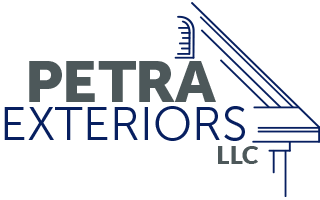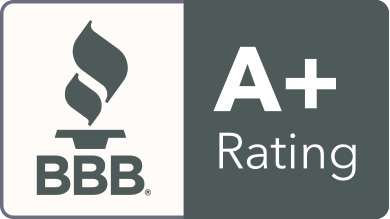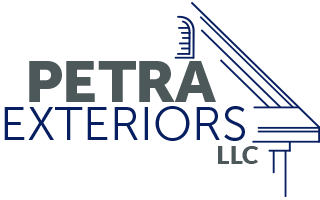Your Siding Questions Answered
Find answers to the most common questions about siding installation, repair, and maintenance.
Frequently Asked Questions from Petra Exteriors
Whether you’re considering new siding for your home, dealing with damage, or comparing material options like vinyl, fiber cement, and wood, our comprehensive FAQ section covers everything homeowners need to know. Get expert insights on costs, installation timelines, maintenance requirements, and when to call a professional siding contractor.
Do I need a permit to replace siding?
Yes, most full siding replacements require building permits, as officials need to ensure the work can withstand local weather conditions and meets building codes. Minor repairs may not require permits, but check with your local building department.
Can siding be installed in winter?
Yes, siding can be installed in winter with proper precautions. Professional contractors can work in cold weather by allowing materials to acclimate and following manufacturer temperature guidelines for installation.
What’s the difference between fiber cement and vinyl siding?
Fiber cement siding is more durable, energy-efficient, and temperature-resistant than vinyl siding but comes with a higher price tag and can be harder to install. Vinyl is lighter, less expensive, and easier to install.
Will new siding increase my home’s value?
Yes, big time. Especially when it replaces faded, cracked, or mismatched panels. Buyers see new siding and think, “Less to worry about. Let’s make an offer.” Plus, quality siding installation typically recoups 70-80% of the investment in increased home value, with fiber cement siding offering some of the highest returns on investment among exterior improvements.
Can I install siding over existing siding?
In some cases, new siding can be installed over existing siding if the underlying structure is sound. However, removal of old siding is often recommended for best results and to address any underlying issues.
How do I choose the right siding color?
Consider your home’s architectural style, surrounding landscape, neighborhood aesthetic, and personal preferences. Lighter colors reflect heat better, while darker colors may show dirt less but absorb more heat.
What causes siding to fail prematurely?
Common causes include poor installation, moisture intrusion, inadequate ventilation, impact damage, and lack of maintenance. Proper installation by certified contractors prevents most premature failures.
Is insulated siding worth the extra cost?
Insulated vinyl siding offers more energy efficiency than standard siding and can provide additional benefits when combined with proper insulation systems, making it cost-effective for energy savings.
How do I maintain my siding?
Regular maintenance includes annual cleaning, inspecting for damage, caulking gaps, touching up paint as needed, and trimming vegetation away from siding. Different materials have varying maintenance requirements.
What’s the most durable siding material?
Fiber cement siding is tough and will last far longer than wood, offering excellent durability against weather, insects, and fire. Steel and engineered wood are also highly durable options.
Can damaged siding be repaired instead of replaced?
Minor damage like small cracks, dents, or loose panels can often be repaired. However, extensive damage, multiple problem areas, or siding nearing end of life typically warrant full replacement.
What warranty should I expect on siding?
Quality siding materials typically come with 20-50 year manufacturer warranties, while installation warranties from reputable contractors range from 2-10 years covering workmanship and labor.
How does siding affect energy efficiency?
Siding choice impacts energy efficiency through insulation properties and heat retention characteristics, affecting cooling and heating costs. Insulated options and proper installation maximize efficiency.
What’s the lifespan of different siding materials?
Vinyl lasts 20-40 years, fiber cement 50+ years, wood 20-30 years with maintenance, and steel/aluminum 30-50 years. Proper installation and maintenance significantly extend lifespan.
Should I replace siding and roofing at the same time?
Coordinating siding and roofing projects can save money on scaffolding, permits, and labor costs. It also ensures better integration of materials and warranties from a single contractor.
What are signs my siding needs replacement?
Warning signs include warping, cracking, fading, mold growth, increased energy bills, frequent maintenance needs, and visible damage. Professional inspection can determine repair vs. replacement needs.
How do I find a qualified siding contractor?
Look for licensed, insured contractors with manufacturer certifications, local references, Better Business Bureau ratings, and written warranties. Always get multiple detailed quotes before deciding.
What preparation is needed before siding installation?
Preparation includes removing old siding if necessary, repairing underlying structural issues, ensuring proper moisture barriers, and clearing work areas. Contractors handle most preparation tasks.
Can siding be cleaned, and how often?
Yes, most siding should be cleaned annually using appropriate methods for the material. Pressure washing, soft washing, or hand washing with mild detergents keeps siding looking new and prevents damage.
What environmental factors affect siding choice?
Consider local climate, UV exposure, humidity, temperature extremes, wind conditions, and precipitation patterns. Some materials perform better in specific environments, making professional consultation valuable.
Which material is trending around here?
Fiber cement’s stealing the spotlight lately. The look, the durability, the ROI—it checks boxes. Vinyl still has a place, but homeowners with long-game vision are going with the popular James Hardie Siding.
How long does a siding installation take?
Most installs take 7–10 business days. We plan for weather, notify early, and keep things on track. We hate delays as much as you do.
Ready to Start? Let’s Talk.
From the first walkthrough to the final cleanup, everything we do is shaped by a belief that your house deserves more than a one-size-fits-all fix. Whether you’re replacing old siding that’s seen one too many storms, finally upgrading that drafty roof, or just ready for a look that makes you proud to come home, our team will help you make decisions with confidence, not pressure.


